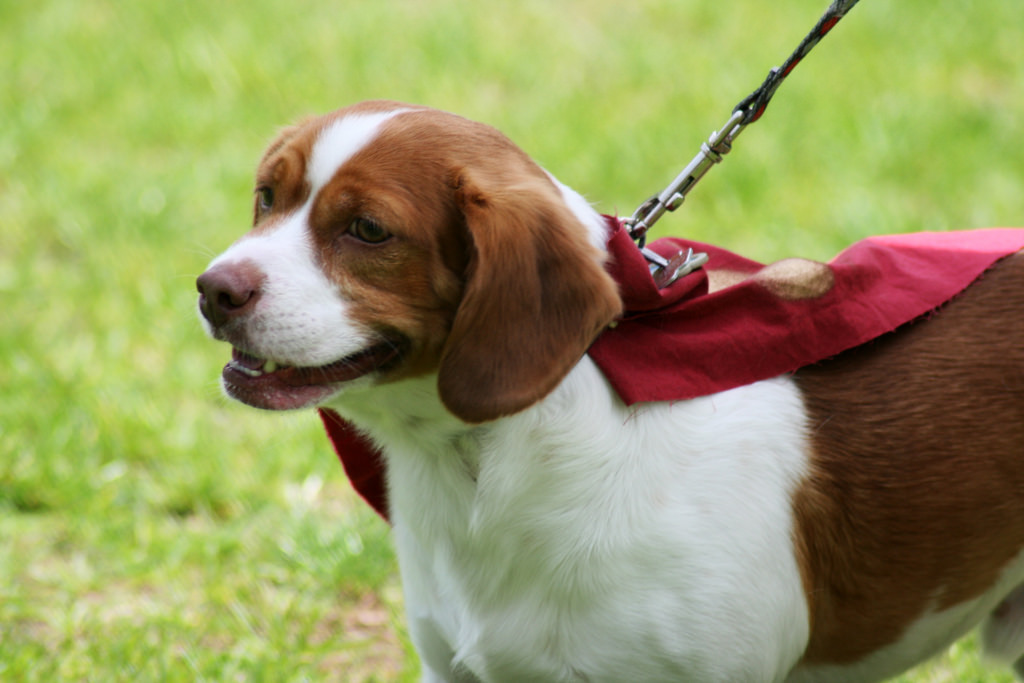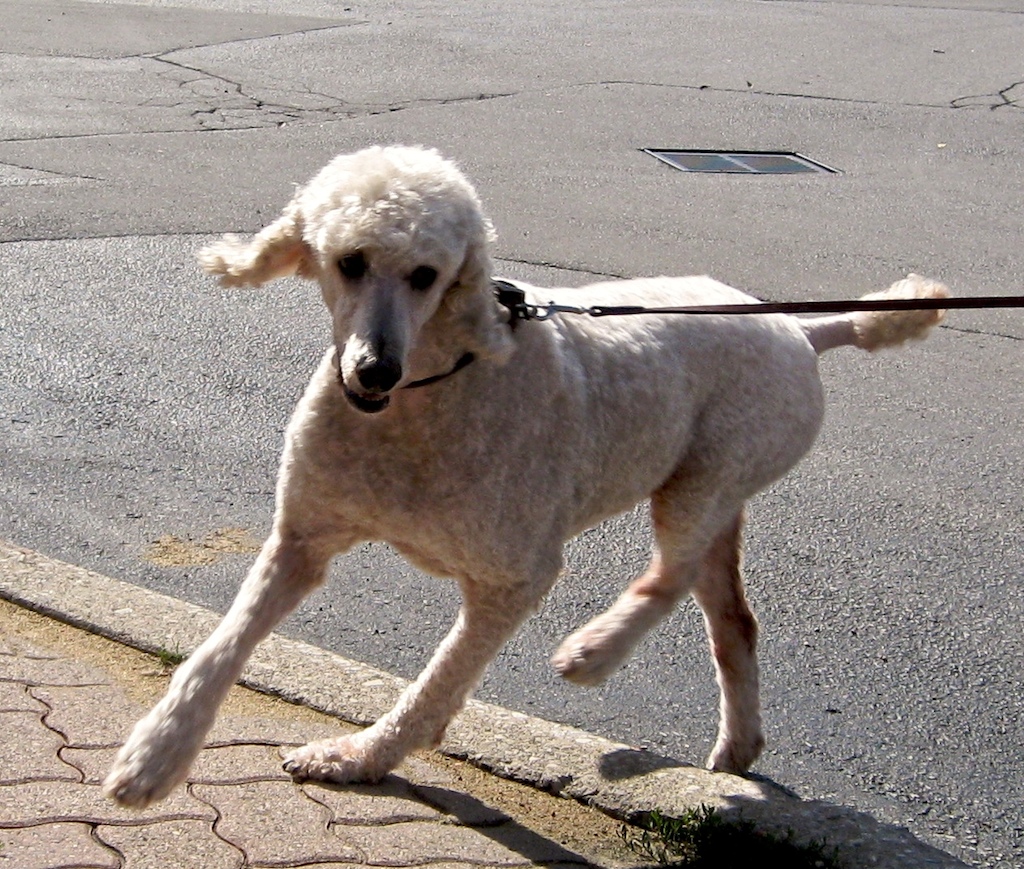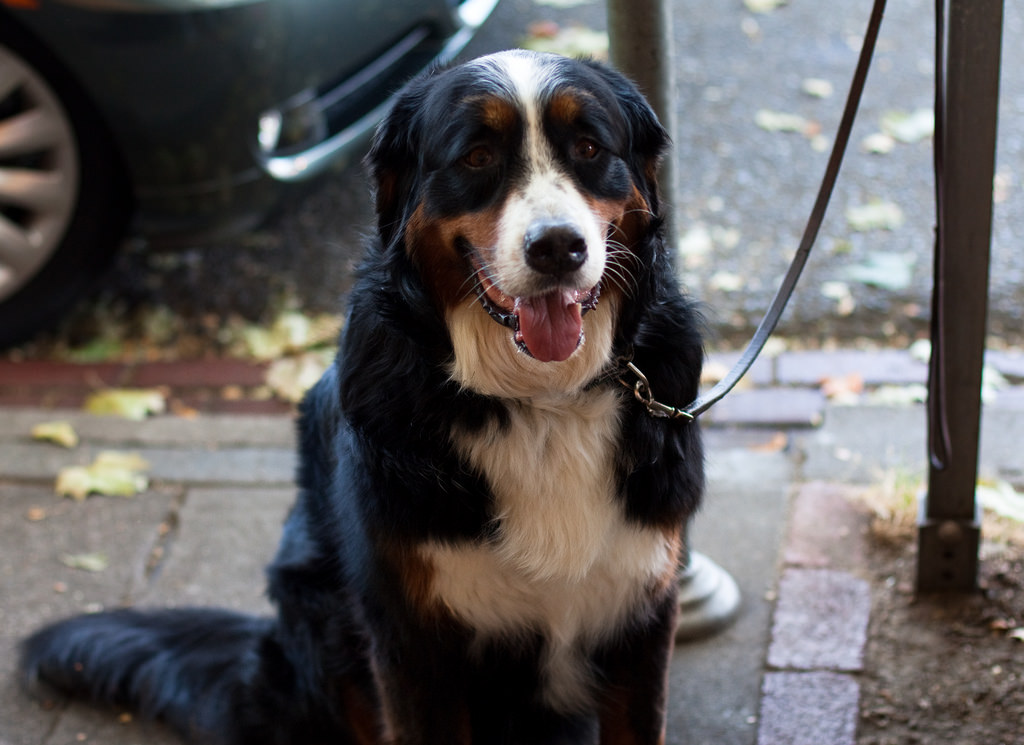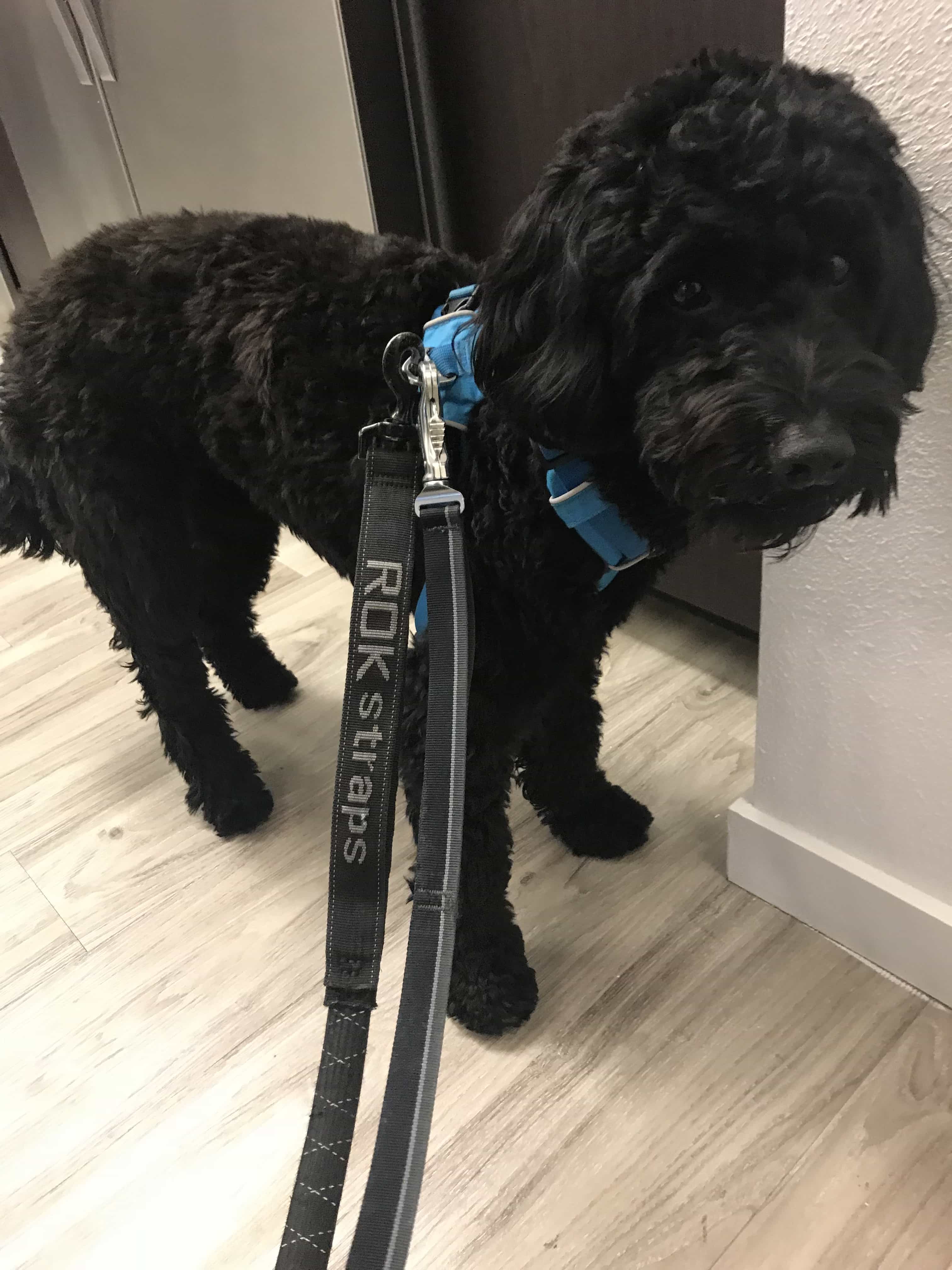These are the 3 best chew-proof dog leashes

As a proud dog mom of a black Lab-German Shepherd mix, I learned very quickly that “chew proof” would become a regular part of my vocabulary.
Just about every leash, toy or object that came in contact with my canine would be, at best, torn or frayed into oblivion.
When I first brought my rambunctious rescue pup home, he was just under 10 pounds. At the time, I thought it was so cute that he would pull on or tug at his leash when we went out for a walk. I used to laugh at his persistent attempts to take me for a walk.
That is, until my sweet little 10-pound puppy turned into a 90-pound full-grown dog and his cute leash behavior was no longer cute – it was exhausting and dangerous. My cheap pet store leashes were being shredded with as little as an effortless tug.
I started getting progressively more anxious about taking my dog for a walk. Only a tattered piece of nylon kept my robust Labrador at my side. Would it hold? What if we saw a dog and he decided on an impromptu game of tug-o-war? I was worried that at any moment he would find a way to escape my control.
Though my dog isn’t aggressive, witnessing a large dog hurdling toward you would be unnerving for any passerby. I was concerned my neighbors would think I was an irresponsible dog owner or worse, that my dog would get hurt. My dog was bred to hunt; he is certainly faster and more agile than I am, so catching him before he ran into a major street or someone’s yard was unlikely.
To appease my concerns, I enrolled my dog in a training course for unruly walkers. In addition to training me on how to keep my dog calm on our walks, they supplied me with a leash that was characterized as “chew resistant.”
Everything else in my home was already catered to my dog’s chewing habits, but this was the first time I was exposed to a leash that could withstand my dog’s rowdy behavior.
What to know: Your dog may chew on their leash because they’re anxious, bored or even just curious. When looking for a chew-proof leash, make sure to consider the materials it’s made from and its clip and safety features. Scroll to the bottom for our recommendations.
Why do dogs chew their leashes?
There are a number of reasons a dog will chew, but below I’ve included a few specific reasons your dog will chew on their leash.
Curiosity
Dogs are a lot like humans: They’re incredibly curious. Unlike most humans, however, they investigate things with their mouths and will often explore objects by chewing or gnawing on them. Items that have a unique texture, like a nylon leash, or taste and smell interesting to them, will also offer a fun, interesting or soft texture that feels good on their gums or teeth.
If they are not immediately offered a viable alternative, the behavior may be reinforced. For me, this meant that my dog’s early leash-biting behavior became a problem because I allowed it. It was fun for him and offered an opportunity to gain extra attention from me.
Anxiety
One of the leading causes of destructive behavior in dogs is anxiety. Dogs that suffer from any form of anxiety will often chew or destroy objects because they are trying to release their excess energy or frustration. They are wrought with unease or nervousness and are attempting to find a way to soothe that feeling.
Your dog can exhibit anxious behavior immediately after being put on a leash, but in some cases, people, objects or circumstances on a walk will also trigger anxiety in your dog. Maybe they don’t like the sound of a skateboard rolling over concrete or are suspicious of the wrestling of leaves; chances are, you may not be aware of the trigger.
Objects that may seem insignificant to us are often frightening or unnerving to our dog. After all, they don’t have the life-experience that we have and are seeing the world from a very different point of view.
Excess energy and boredom
It’s not unusual for the average dog to spend a large part of their day at home alone. When you get home from work, you’re greeted at the door by a dog that has hours’ worth of cooped-up energy and enthusiasm. Not only will you be left to combat an overly enthusiastic dog, but with that come a number of unruly behaviors.
One of the ways a dog will release their excess energy is by mouthing or tugging on a leash. This is a slippery slope, because in order to reduce this behavior, your pup needs to expel energy (e.g., go for a walk) but taking them on a walk will be more frustrating or challenging if they pull on the leash every time you leave the home.
Does your dog need a chew-resistant dog leash?
I never knew I needed a chew proof leash for my canine until I owned one. After speaking to dog trainers and researching leashes on the market, I realized that every time I left home I was gambling with my dog’s safety.
In order to make an informed decision on whether or not a chew-resistant leash would be helpful for you, you’ll want to look for some key characteristics in your pup.
Heavy chewers
Have you ever returned home from work to discover that your favorite shoes have been reduced to shrapnel? Maybe the leg of your dining room table has a new set of impressions that don’t quite fit the design? The marks of a chewer are certainly hard to miss.
More than likely, your dog is a heavy chewer and exhibiting these behaviors for one of the reasons listed above. You may be actively working on reducing their chewing behavior, but in the meantime, if you have a dog that chews heavily (or even moderately), it will be useful to have a leash that they cannot or will not chew through.

The right leash could save your sanity if you have a bored or anxious dog. Image: Warchild
Training starts as a puppy
Just about every puppy could be lumped into the “heavy chewer” category. As puppies mature, they are incredibly curious and unpredictable. Just like us, they want to test their boundaries and often do so by chewing, gnawing or biting on objects.
This was my shortcoming. I allowed my cute, rambunctious puppy to learn that leash biting was a behavior that I would allow. As he got older and it became more of a problem, I learned that leash biting is a behavior that most puppies exhibit when they are learning proper walking etiquette. They pull and bite on a leash because it’s fun, exciting and a great way to get your attention!
While your dog is learning walking etiquette, finding a leash that is more durable will provide you with more control and peace of mind.
Leash aggression and anxiety
Leash aggression and anxiety are often mistaken for one another because dogs that are aggressive and anxious often exhibit similar behaviors. For example, it is not unusual for an anxious or aggressive dog to lunge, pull and bite and their leash.
This is largely due to a dog’s fight or flight reaction. Though it may feel like your dog is acting aggressive to demonstrate their dominance, they may be chewing at their leash and displaying aggressive behaviors out of fear. In fact, a lot of times aggression is a means to escape an uncomfortable or scary situation.
Either way, a dog that is exhibiting these types of behaviors may be unpredictable. if your dog is attempting to bite through their leash and showing physical signs of aggression or distress, it’s important to consider a chew-resistant leash to keep your dog and other animals/people safe.
Why a chew-resistant leash?
By now you may have categorized your dog as a leash chewer, but why do they need a durable leash? Below are three reasons your dog would benefit from a chew-resistant leash:
Practicality
Before my dog trainer gave me insight into a chew-resistant leash, it felt like I was buying a new leash every time I made a trip to the pet store. Even though I was actively training my dog, I knew it would take a lot of time to undo his poor leash etiquette. In the meantime, finding a leash that wouldn’t be destroyed on a bi-weekly basis was an obvious choice.
If you are concerned about your dog’s leash-chewing behaviors and being able to have full control over your dog on walks, it is also practical to consider a preventative measure, rather than hope that something doesn’t go wrong.
Durability
Even if you’re one of the lucky ones and your dog doesn’t play tug-o-war with the leash, durability in any pet product is critical. This is especially true for objects that you use on a daily basis, like your dog’s leash.
Your dog’s leash is one of the more heavily used objects your dog will own. A leash is used once or twice a day, (hopefully) every day, for 30+ minutes at a time. In addition to a daily walk, you might also use your dog’s leash for other reasons, like a trip to the vet, a car ride or to give him a bath.
Anything that is heavily used on a regular basis will eventually break down. Because chew-resistant leashes are made of more durable materials and designed to prevent damage, however, they will last longer than the average leash.
Safety
I really can’t emphasize this enough. Owning a dog is a lot like taking care of a child; keeping them safe takes precedence over everything else. Also, like children, a dog’s curiosity, boredom or excitement can inadvertently land them in precarious situations.
If your dog is exhibiting any of the behaviors listed above and is chewing through their leash, more than likely they don’t realize the repercussions of their actions. Without taking additional precautions, you may find your leisurely walk interrupted by your pup escaping your control.
Not only is this incredibly frustrating for you, it’s also dangerous. Your dog will be subjected to unknown animals, people and places. They may run through busy intersections, into oncoming traffic or into the backyard of an unfriendly dog.
A chew-resistant leash will help put you at ease so you can go back to enjoying your evening stroll, rather than worrying that the leash will break.

A chew-proof leash will help keep your pup safe and you happy. Image: Neil Conway
What to look for in a dog leash
Picking out a quality leash may seem straightforward, but there are actually a lot of different things to consider.
Materials
There are a variety of leashes on the market and like other dog products, there are a variety of shapes, sizes and materials used to make them.
When you’re looking at chew proof dog leashes, it’s important to consider the type of leash-chewer your dog is. For example, steel cable or metal chain dog leashes may be a great option for a dog that chews due to texture or curiosity but would not be suitable for a dog that is anxious or aggressive.
Aggressively chewing on a leash made of metal or steel has the potential to injure your dog, so some brands will offer a vinyl cover to prevent injury.
Not all chew-proof leashes, however, are made from virtually indestructible material. In fact, some are still made of vinyl but are marketed as double layered or webbed nylon. These will offer more durability than a traditional leash but will keep the leash lightweight and flexible. Chances are, the only difference you or your dog will notice about these is that they are not easily destroyed.
The last thing to consider when choosing the right dog leash is whether or not its waterproof. Part of what makes these types of leashes unique is that they are practical and durable. There are a lot of choices that are made from waterproof materials, so you can take the leash (and your canine, of course) anywhere and everywhere!
Look for a heavy duty metal clip for added security and durability.
Clips and security features
One of the key motivations for finding a high quality leash is your dog’s safety. Fortunately, the materials are not the only precautions taken to help with keeping your dog safely on leash. There are a number of chew-proof leashes on the market that offer specialized clips or locking mechanisms that will keep your pooch’s collar secured to their leash.
Not only is it important to have additional clips and security features, but they should also be durable. If safety is a concern, you should consider one that has clips made of metal, rather than plastic.
Particularly with vivacious or anxious pups, plastic fasteners and clips will easily break or detach from your dog’s collar and/or leash. Not to mention that if your dog is unable to chew the fabric portion of the leash, they will probably attempt to find a more vulnerable parts of the leash that they think they can chew through. Having durable, metal fasteners will prevent your pup from finding a weak spot and escaping your control.
Top 3 chew-resistant dog leashes
Here are our suggestions for chew-proof canine leashes:
Flat Out Leash by Ruffwear

Carl sporting his Ruffwear leash.
Ruffwear is a well-known pet brand that is focused on making gear suitable for the roughest and toughest terrains (and dogs). If you have an adventure doggo or a persistent leash chewer and are trying to find a product that is both durable and economical, Ruffwear is definitely a top contender.
Ruffwear is unique because they make a variety of leashes based on the type of activity you have planned for your pup. Though the Flat Out leash is considered their “everyday” leash, it offers the same level of durability and functionality as other leashes available.
The Flat Out leash can be worn around the waist for hands-free fun, or can be used hand-held. It is also equipped with a heavy-duty clip and a unique “traffic handle” that will allow you to quickly restrain your dog as needed.
At 6 feet in length, the Flat Out’s Tubelok webbing and handy accessory loop make the overall design of this dog leash suitable for even the most vivacious pups.
As an added bonus, there are nine different colors to choose from, so you don’t have to sacrifice fashion for functionality – and the Flat Out is 100-percent waterproof.
Here’s what customers have to say about the Flat Out Leash by Ruffwear:
Pros:
- Sturdy metal leash attachment
- Waist feature is convenient
- Comfortable padded grip
- Strong and durable leash
- Washable
Cons:
- Handle clip is made of plastic, rather than metal
- Shorter than expected (6ft long)
You can see more photos and buy the Ruffwear Flat Out leash on Amazon.
ROK Straps Stretch Leash

The fabulous Carl modeling a side by side comparison of the ROK and Flat Out leash.
Known as the “ultimate stretch leash,” the ROK Straps stretch dog leash was designed specifically to reduce the amount of jerking and jolting involved in walking your dog. Because the leash physically stretches, it provides the functionality of a retractable leash with the control of a standard leash.
Similar to the Ruffwear leash, the ROK Straps stretch dog leash is double-layered and offers heavy-duty stitching. Unlike the Ruffwear leash, however, it has a nickel or brass connector, rather than plastic. Too add to its durability it’s also made of ply polyester, rather than the traditional nylon material.
The ROK Straps Stretch Dog Leash has a durable, metal clip for added security and non-stretch handle so you can maintain control at all times. ROK offers eight unique colors with an added reflective strip so you can still feel confident while walking your dog at night.
ROK markets their dog leash as being catered toward owners who are concerned about their dog’s health and safety, so, like Ruffwear, they meticulously design and test their products to make sure they can withstand the demands of the most adventurous pup.
Here’s what customers have to say about the ROK Straps Stretch Dog Leash:
Pros:
- Stretchiness prevents dog from pulling
- Clip is extremely durable
- Leash is extremely strong and durable
Cons:
- Bulkier than competing leashes
- Handle is uncomfortable
Read more reviews and purchase the ROK Straps Stretch leash on Amazon.
Flexi New Comfort Retractable Leash
This 26-foot tape leash works well for dogs up to 110 pounds and has a brake button strong enough that you won’t have to worry about your dog snapping it if they tug on the leash too hard.
This Flexi leash is made in Germany and has an adjustable handle with ergonomic grip and one-handed braking. You can customize it with an LED-lighting system and a box for treats or poop bags.
The 8.2 x 1.9 x 5.3-inch leash only weighs 1.15 pounds, so you don’t have to worry about getting tired as you hold it during long walks. The tape is three-quarters of an inch wide.
Here’s what customers have to say about the Flexi New Comfort Retractable Dog Leash:
Pros:
- Doesn’t wear out
- Easy to use
- Brakes easily
- Accessories are helpful
Cons:
- Tape may show wear with heavy use
- Ergonomic handle isn’t good for summer months
- Braking button is small
You can see pictures and purchase the Flexi New Retractable Leash on Amazon.
Training a dog that is anxious or overly-excited, like my pup, takes a lot of time. There aren’t any quick fixes for leash-biting or tugging behaviors. However, even after training my dog to walk appropriately, I still refer to my quality leash for peace of mind on walks. It is durable, safe and secure, which allows me to spend less time stressing and more time enjoying time outdoors with my dog.
-Morgan Shannon
Morgan is a pet niche dog blogger located in Southern California. When she’s not writing, you’ll find her exploring the great outdoors with her Labrador, Kingston.
Feature image: Quinn Dombrowski
